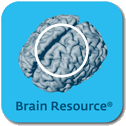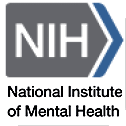 Five years ago, I ran across an Australian company called Brain Resources. It appeared to be primarily a Brain Training enterprise, but they were into a lot of other things too. They were financing iSPOT, a clinical trial of personalized medicine trying to predict antidepressant drug choice based on Genetic and/or other testing. And they were amassing a Database of subjects testing all things neuro [testing, genetics, imaging, etc]. There were two principals: Evian Gordon, a Brain Training guru type, and Leanne Williams, second in command, in charge of the database which was to be made publicly available. They had put together an amazing conference in the US about personalized medicine, attended by KOLs from far and wide [roster][video] called the Mayflower Initiative. And there were a number of KOLs involved in their iSPOT trial. To be honest, I didn’t know what to make of it. The personalized medicine meme swept through psychiatry. Besides Brain Resources’ iSPOT, there was EMBARC, a similar trial funded by the NIMH with Madhukar Trivedi as P.I. Nemeroff gave talks about it. Insel blogged about it. Papers were published along the way.
Five years ago, I ran across an Australian company called Brain Resources. It appeared to be primarily a Brain Training enterprise, but they were into a lot of other things too. They were financing iSPOT, a clinical trial of personalized medicine trying to predict antidepressant drug choice based on Genetic and/or other testing. And they were amassing a Database of subjects testing all things neuro [testing, genetics, imaging, etc]. There were two principals: Evian Gordon, a Brain Training guru type, and Leanne Williams, second in command, in charge of the database which was to be made publicly available. They had put together an amazing conference in the US about personalized medicine, attended by KOLs from far and wide [roster][video] called the Mayflower Initiative. And there were a number of KOLs involved in their iSPOT trial. To be honest, I didn’t know what to make of it. The personalized medicine meme swept through psychiatry. Besides Brain Resources’ iSPOT, there was EMBARC, a similar trial funded by the NIMH with Madhukar Trivedi as P.I. Nemeroff gave talks about it. Insel blogged about it. Papers were published along the way.  Meanwhile, right around the same time, Tom Insel’s NIMH introduced its Research Domain Criteria [RDoC] [Genes and Circuitry, Not Just Clinical Observation, to Guide Classification for Research January 2010]. Born from the frustration of the poor specificity of psychoactive drugs for clinical diagnosis, the RDoC proposed to search for other parameters that might define syndromes that more accurately map to drug response. But while personalized medicine and the RDoC may sound like different things, operationally, they’re the same – broad surveys of objective parameters [genomic, imaging, clinimetrics, etc] analyzed looking for clusters or correlations not apparent in the traditional clinical categories [using big data statistical techniques].
Meanwhile, right around the same time, Tom Insel’s NIMH introduced its Research Domain Criteria [RDoC] [Genes and Circuitry, Not Just Clinical Observation, to Guide Classification for Research January 2010]. Born from the frustration of the poor specificity of psychoactive drugs for clinical diagnosis, the RDoC proposed to search for other parameters that might define syndromes that more accurately map to drug response. But while personalized medicine and the RDoC may sound like different things, operationally, they’re the same – broad surveys of objective parameters [genomic, imaging, clinimetrics, etc] analyzed looking for clusters or correlations not apparent in the traditional clinical categories [using big data statistical techniques].
by Leanne M WilliamsLancet Psychiatry. 2016, Published Online April 14, 2016
Although there have been tremendous advances in the understanding of human dysfunctions in the brain circuitry for self-reflection, emotion, and cognitive control, a brain-based taxonomy for mental disease is still lacking. As a result, these advances have not been translated into actionable clinical tools, and the language of brain circuits has not been incorporated into training programmes. To address this gap, I present this synthesis of published work, with a focus on functional imaging of circuit dysfunctions across the spectrum of mood and anxiety disorders. This synthesis provides the foundation for a taxonomy of putative types of dysfunction, which cuts across traditional diagnostic boundaries for depression and anxiety and includes instead distinct types of neural circuit dysfunction that together refl ect the heterogeneity of depression and anxiety. This taxonomy is suited to specifying symptoms in terms of underlying neural dysfunction at the individual level and is intended as the foundation for building mechanistic research and ultimately guiding clinical practice.
Brain wavesBy Tracie WhiteStanford Medicine, Winter 2016
… a fluff-piece in the Stanford Medicine Magazine about Dr. Leanne Williams…
by Leanne M. Williams, Andrea N. Goldstein-Piekarski, Nowreen Chowdhry, Katherine A. Grisanzio, Nancy A. Haug, Zoe Samara, Amit Etkin, Ruth O’Hara, Alan F. Schatzberg, Trisha Suppes, and Jerome YesavageBMC Psychiatry. DOI: 10.1186/s12888-016-0771-3. Published: 15 March 2016
Background: Understanding how brain circuit dysfunctions relate to specific symptoms offers promise for developing a brain-based taxonomy for classifying psychopathology, identifying targets for mechanistic studies and ultimately for guiding treatment choice. The goal of the Research Domain Criteria [RDoC] initiative of the National Institute of Mental Health is to accelerate the development of such neurobiological models of mental disorder independent of traditional diagnostic criteria. In our RDoC Anxiety and Depression [“RAD”] project we focus trans-diagnostically on the spectrum of depression and anxiety psychopathology. Our aims are [a] to use brain imaging to define cohesive dimensions defined by dysfunction of circuits involved in reactivity to and regulation of negatively valenced emotional stimulation and in cognitive control, [b] to assess the relationships between these dimension and specific symptoms, behavioral performance and the real world capacity to function socially and at work and [c] to assess the stability of brain-symptom-behavior-function relationships over time.Methods and design: Here we present the protocol for the “RAD” project, one of the first RDoC studies to use brain circuit functioning to define new dimensions of psychopathology. The RAD project follows baseline-follow up design. In line with RDoC principles we use a strategy for recruiting all clients who “walk through the door” of a large community mental health clinic as well as the surrounding community. The clinic attends to a broad spectrum of anxiety and mood-related symptoms. Participants are unmedicated and studied at baseline using a standardized battery of functional brain imaging, structural brain imaging and behavioral probes that assay constructs of threat reactivity, threat regulation and cognitive control. The battery also includes self-report measures of anxiety and mood symptoms, and social and occupational functioning. After baseline assessments, therapists in the clinic apply treatment planning as usual. Follow-up assessments are undertaken at 3 months, to establish the reliability of brain–based subgroups over time and to assess whether these subgroups predict real–world functional capacity over time. First enrollment was August 2013, and is ongoing.Discussion: This project is designed to advance knowledge toward a neural circuit taxonomy for mental disorder. Data will be shared via the RDoC database for dissemination to the scientific community. The clinical translational neuroscience goals of the project are to develop brain-behavior profile reports for each individual participant and to refine these reports with therapist feedback. Reporting of results is expected from December 2016 onward.Trial registration: ClinicalTrials.gov Identifier: NCT02220309.
British Medical Journalby Caroline White1 September 2011The field of mental health is on the cusp of a revolution, which is set to transform the diagnosis and treatment of mental illness and reverse the lack of major progress made in curbing associated ill health and death over the past 100 years, the director of the US National Institute of Mental Health, has claimed. “We are at an extraordinary moment when the entire scientific foundation for mental health is shifting, with the 20th century discipline of psychiatry becoming the 21st century discipline of clinical neuroscience,” Thomas Insel said before a meeting on the challenges facing mental health research at the Royal Society in London on 31 August…
The seismic shift had been driven by what he described as three “revolutionary changes” in thinking, the first of which was that mental illness was increasingly being recognised as a disorder of brain circuitry, rather than as a chemical imbalance, thanks to neuroimaging techniques and the discovery of some key biomarkers. Secondly, mental ill health was now recognised as a developmental disorder for which early intervention was vital, said Professor Insel, highlighting US research showing that 50% of study participants had reported the onset of mental health problems by the age of 14, and 75% by the age of 24. “We are still stuck with getting to the problem very late. The future will be about understanding the trajectory of illness so that we can identify the first signs before it develops into psychosis,” he said…
Since we’re on a literary groove here, let me quote Yeats:
The best lack all conviction and the worst are full of passionate intensity.
Why doesn’t the rank and file just say enough of this pie in the sky whimsy while most actual mental health treatment of severe illness occurs in jails….
http://bigstory.ap.org/article/41862cd52c5d4850bcf8557a2a26f8df/ap-exclusive-dozens-escaped-mental-hospital-2013
Maybe we can spend millions and waste time teaching residents to explain this behavior on the basis of a DLPFC-amygdala circuit dysfunction, or alternatively, we can make sure people just do their jobs.
A lot of daydreaming these days, not a lot of attention to patients…
I did have one professor who made a very compelling case that trauma creates some kind of “circuit” between synapses in the PFC and way back in the brainstem, and that it tends to get hard-wired if the trauma occurs before neurons are myelinated.
It seemed to fit with a lot of Bruce Perry’s work, which has a kind of developmental logic to it that feels intuitively right, and seems like a very useful way of thinking about trauma.
That seems to be about the extent of any useful information I’ve ever stumbled across with respect to brain “circuitry.”
I’m fascinated by neuroscience, but I’m also fascinated by the stock market, politics, and many other subjects where I only rarely expect to find patterns that translate into useful information.
I have enjoyed the literary groove of the past few days as well, very much.